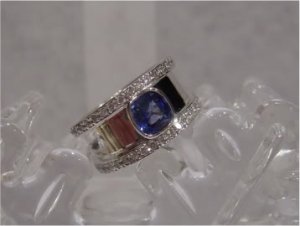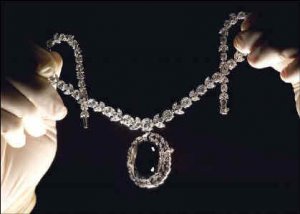Gypsy
Super_Ideal_Rock
- Joined
- Aug 8, 2005
- Messages
- 40,225
David, I was browsing on your site today and ran across this pair of diamonds and was genuinely bcurious about the listing http://rockdiamond.com/index.php/jewelry/loose-diamond-matching-pair-of-gia-gray-diamonds-that-look-black-with-sparkle-r3210
I had no idea there was a 'fancy dark' catagory for GIA diamonds... it makes sense when I think about it... but I was wondering about it just the same. Are these diamonds that would normally be irradiated to change their color? Or is there really a market for these? I know your listing says that they look black, but they kinda look cement colored to me (grayish-green?)... what would they look like next to a white diamond? Can you take a pic? They aren't to my personal taste, but I do wonder if they would look interesting haloed.
Also, we normally think of grade setting clouds as a bad thing... is that not the case with fancy dark diamonds? In some of the pics the diamonds look foggy, and in others a bit glassy with their large tables.
I also noticed that they are radiants. So they were cut to retain color? To appear darker so that tells me that the darkness is a desireable thing. And yet most black diamonds I've seen a really affordable. So where is the line between fancy dark and inexpensive onyx-like black?
I appreciate any illumination
 .
.
I had no idea there was a 'fancy dark' catagory for GIA diamonds... it makes sense when I think about it... but I was wondering about it just the same. Are these diamonds that would normally be irradiated to change their color? Or is there really a market for these? I know your listing says that they look black, but they kinda look cement colored to me (grayish-green?)... what would they look like next to a white diamond? Can you take a pic? They aren't to my personal taste, but I do wonder if they would look interesting haloed.
Also, we normally think of grade setting clouds as a bad thing... is that not the case with fancy dark diamonds? In some of the pics the diamonds look foggy, and in others a bit glassy with their large tables.
I also noticed that they are radiants. So they were cut to retain color? To appear darker so that tells me that the darkness is a desireable thing. And yet most black diamonds I've seen a really affordable. So where is the line between fancy dark and inexpensive onyx-like black?
I appreciate any illumination











300x240.png)